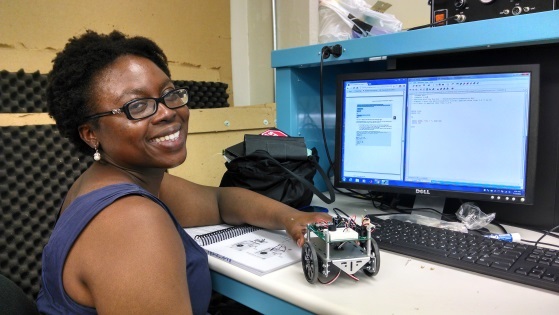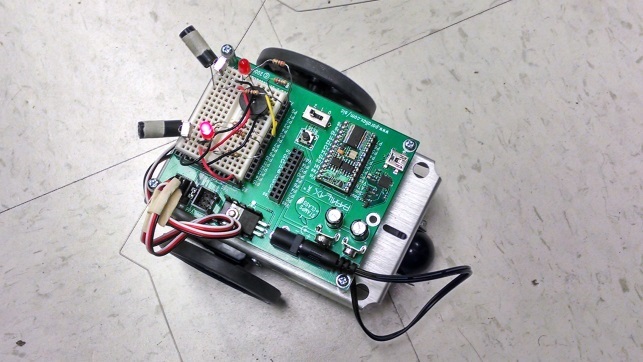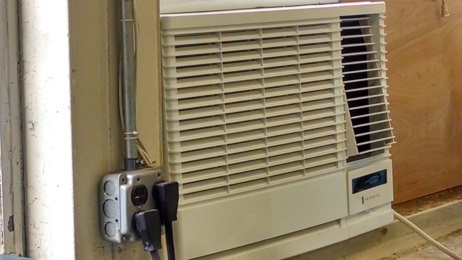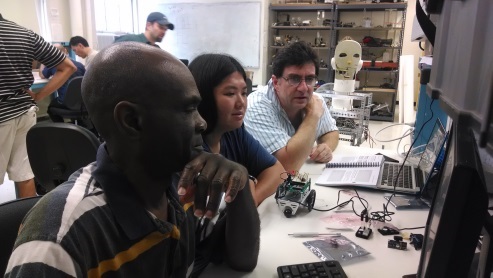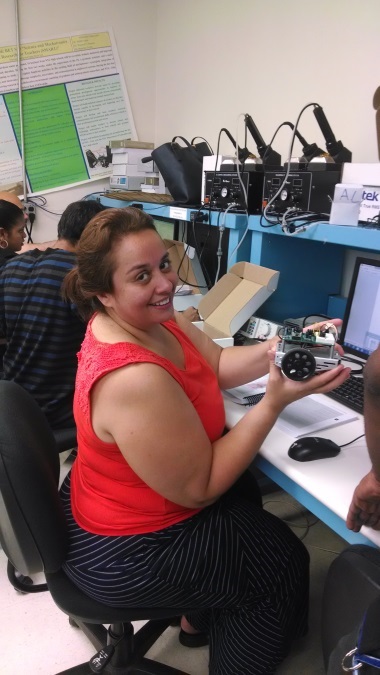July 15, 2014, Day 7:
Sarah Wigodsky
Solomon Schechter School of Westchester – Physics and Electronics Teacher, 14 years of teaching experience
Professor Kapila shared with us an article he recently read on science teaching, after teachers met with President Obama to share their experiences and opinions. We discussed the importance of teachers having research experiences so that we can better teach our students. Discussing educational philosophy emphasized the importance and value of this program. Even though up until now we have not spent time explicitly discussing how science should be taught or what specifically should be taught, this program is influencing our approach to both.
In the morning, Jared taught us about two types of sensors that we would be using on our robots. We learned about infrared sensors that we would add to our Boe-Bots to determine the distance to obstacles. We learned how to connect the infrared detector in a circuit and how to write code for it. Jared then introduced a tactile sensor called a whisker. It cleverly acts as a switch because when the long metal whisker encounters an object, it gets pushed backward into a short piece of metal that sticks out from the breadboard to complete the circuit.
After the lecture, we headed to the lab to add these sensors to our robots. We started by adding two infrared LEDs and two infrared detectors to our Boe-Bot so that it looked that like it had eyes. After testing to make sure the infrared detectors were working properly, we wrote a program that made our Boe-Bot turn to avoid obstacles. We then had the robot move so that it would stay within the lines of a black rectangle. We had a bit of trouble with this since at first it moved over the lines without changing course. But after adjusting the direction the infrared LEDs and sensors were pointing and making the black lines of the rectangle thicker, our robot stayed inside the rectangle nicely.
In the afternoon, Jared taught us about relays. There are mechanical relays, reed relays and solid state relays. Mechanical relays can handle more power than other relays but have a relatively slow switching speed. Reed relays are smaller and can do faster switching. Solid state relays can be used to switch on an object connected to a 120 V outlet.
When we came back to the lab, we had a new example of a feedback system. An air conditioning unit was being installed. Hooray!
In the afternoon we added whiskers to our Boe-Bot and made it alter its course when it encountered obstacles. We then rebuilt our robot with the infrared LEDs and infrared sensors. At the end of the day we were trying to get it to follow a line, but we got stuck. At first, it went backwards instead of forwards. Now it can follow a black line and turn left around corners, but it won’t turn right. We’ll have to fix it tomorrow.

